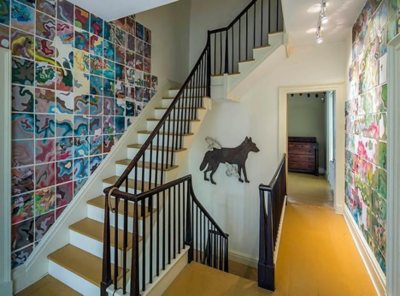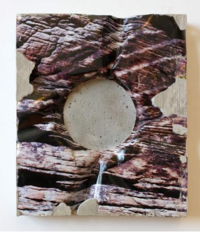River Crossings: Contemporary Art Comes Home
by Bonita McBride
The Olana Partnership/Olana State Historic Site and the Thomas Cole National Historic Site are hosting a joint exhibition, River Crossings: Contemporary Art Comes Home, from now until November 1st. The exhibit features 28 contemporary artists against the backdrop of the beautiful and historically rich Hudson River Valley.
It was in the Hudson River Valley that the first American art movement, the Hudson River School, was born almost 200 years ago. Exploration and discovery were a part of the zeitgeist of the time and thus were important concepts within the school. Artists would venture out into nature to take in views of the surrounding pastoral landscape, ripe for painting. Some works depict majestic views of the Hudson River weaving between rolling hills covered in lush greens and vibrant yellows, reflecting the midday sun; others highlight immense mountains jutting into the sky and looming over a serene lake. Despite the realistic technique used in these paintings, the dramatic and sometimes moody lighting and the grandeur of the landscape creates a dreamlike quality in the scenes.
The exhibition is located in the homes of the Hudson River School founder, Thomas Cole, and his student who became a leading figure of the movement, Frederic Edwin Church. The architectural beauty that impressed him and his wife during their travels in the Near East inspired Church’s lavish Olana estate. Although these properties lie on opposite sides of the Hudson River, they are just two miles apart and are conveniently connected by the Rip Van Winkle Bridge.
Curators Stephen Hannock and Jason Rosenfeld have put together an exhibition that highlights the surprising similarities and differences between the artwork the valley is known for and the new contemporary scene. This fruitful juxtaposition has brought to light interesting projects, for example, featured artist, Jerry Gretzinger, who has on display a collaged map with jaw dropping detail that covers almost three hallway walls. It depicts an aerial view of an imaginary region that resembles a landscape seen from a satellite. Artists in the Hudson River School drew their inspiration from the surrounding area and painted immersive first-person scenes. Likewise, Gretzinger’s map has a similar immersive effect, however it reflects a new generation that has grown up with GPS and satellite imagery.
Also on display is the sculptural photography of Letha Wilson. Wilson begins by taking photographs of remarkable landscapes in the American West and incorporates them into wall sculptures with urban elements such as cement. By taking these photographs and making them 3D, Wilson begins to overcome the limitations of photography to capture the experience of witnessing a landscape firsthand. The Hudson River School is taken a step further by creating works that actively approach the viewer, pushing nature into indoor spaces, rather than having the viewer peer into a framed passive landscape. There is a hint of brutalism in her work, underscored by the ability of nature to swallow anything in its path. Other featured artists include Romare Bearden, Lynn Davis, Kara Hamilton, Frank Moore and Sienna Shields as well as a permanent selection of complementary works by Thomas Cole and Frederic Church.
________________________________________________________________________________________________
Image Credit: Images courtesy of the artists and the Metropolitan Museum of Art online archives.
________________________________________________________________________________________________
Bonita McBride is freelance writer who recently graduated from the University of Houston with a BA in philosophy.



